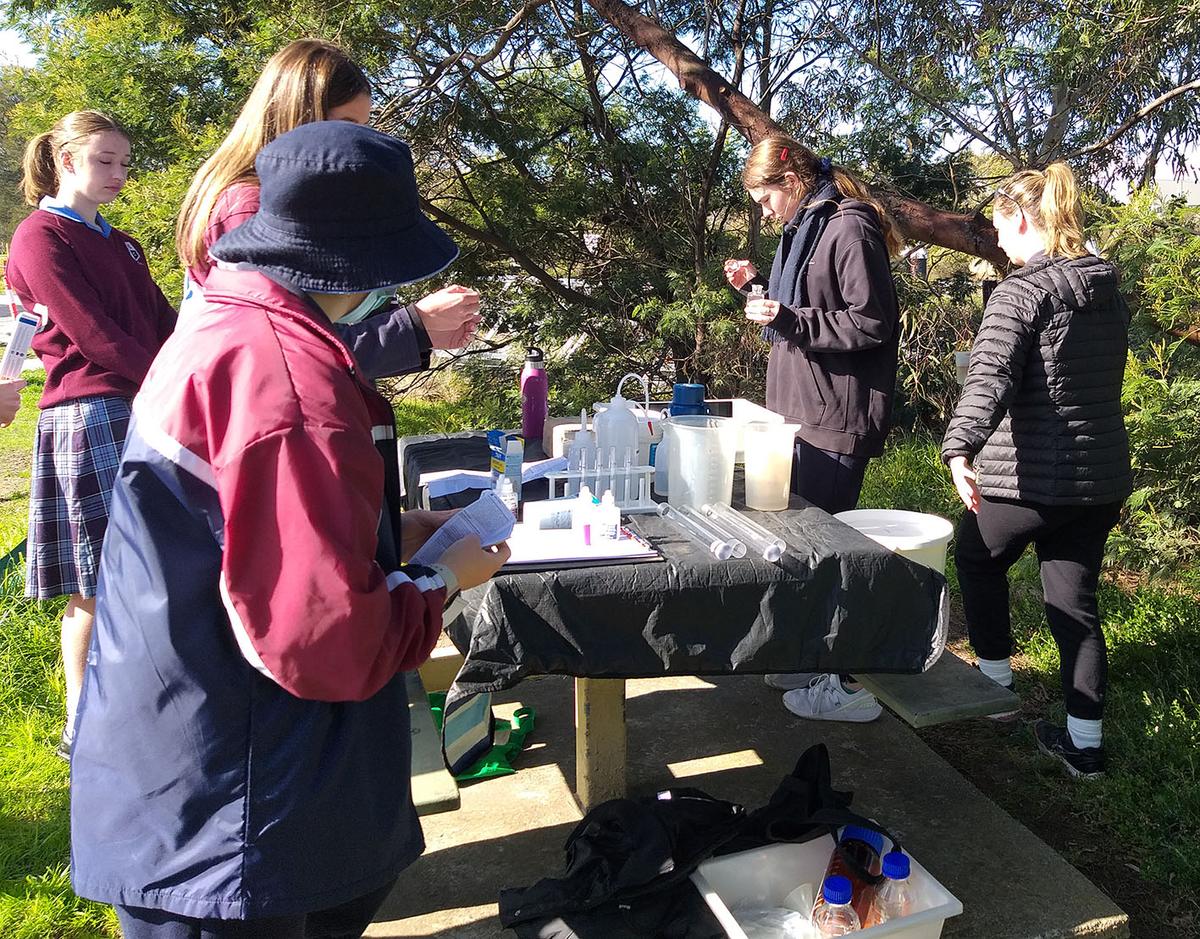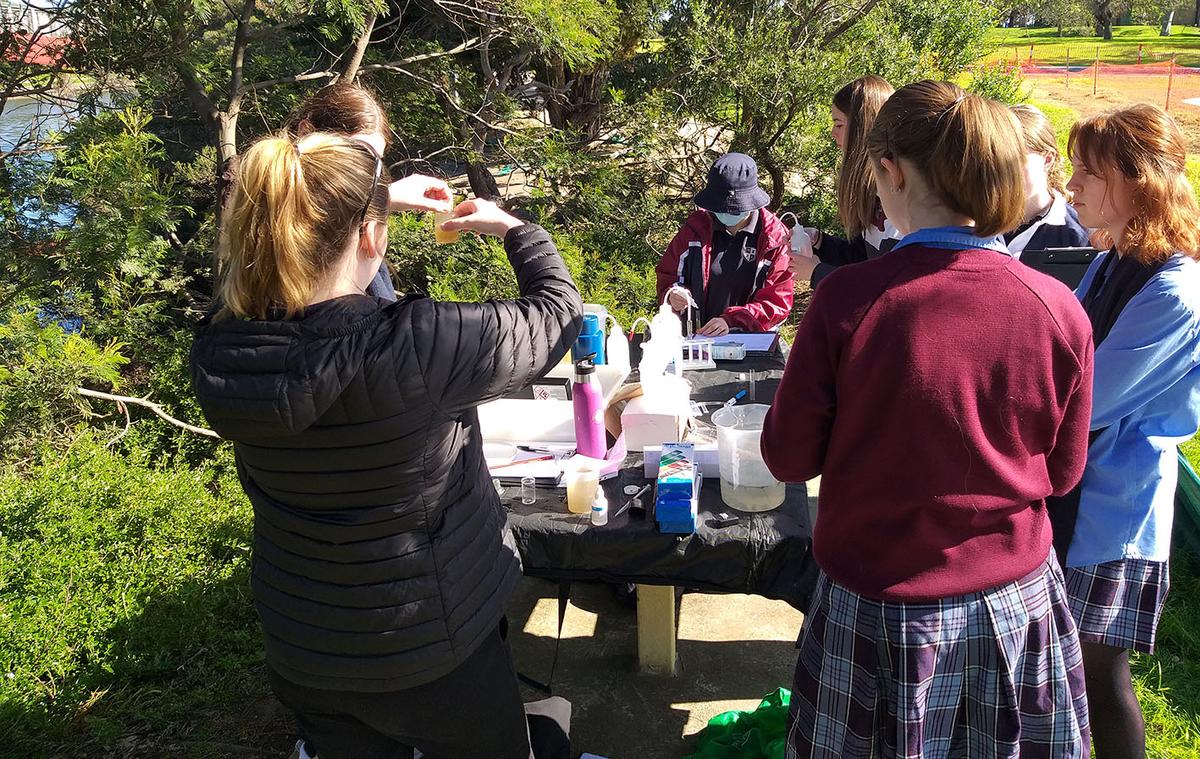Around the classrooms
In the environment

Around the classrooms
In the environment
On a gorgeous Monday, the Year 11 Environmental Science class recently went down to Mordailloc Creek to take samples to test the water quality. Mordialloc Creek receives stormwater runoff from the surrounding streets and industrial areas. We were investigating if the physical and chemical indicators we tested, such as pH, nitrates, phosphates and dissolved oxygen, met EPA guidelines. We also collected macro-invertebrates as an indicator of water quality. At one point scooping a tshirt out of the creek as litter, I even caught a fish!
We spent the next lesson in the lab looking at them and were amazed to find ghost shrimp, worms, isopods and even a tiny crab. There was a lot of excited chatter and squealing, and it was one of those moments as a teacher that makes you feel all warm and fuzzy at how engaged the students were.
The class would like to thank Ms Garrow for driving us down to the creek.








A few weeks ago the Year 11 Environmental Science Class got to visit the Western Treatment Plant without leaving their seats – a much less smelly experience than doing it in real life! We were visited by experts from Melbourne Water who talks us through the Urban Water Cycle and how Melbourne Water is involved in reducing pollutants in both stormwater and sewage water. The students learnt a lot from the experience and go to reflect on what they can do to reduce personal water use and limit pollutants, including:
Ms Kerry Archer
Environmental Science Teacher